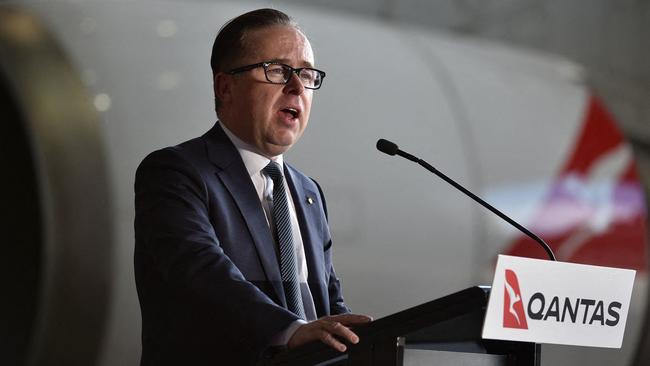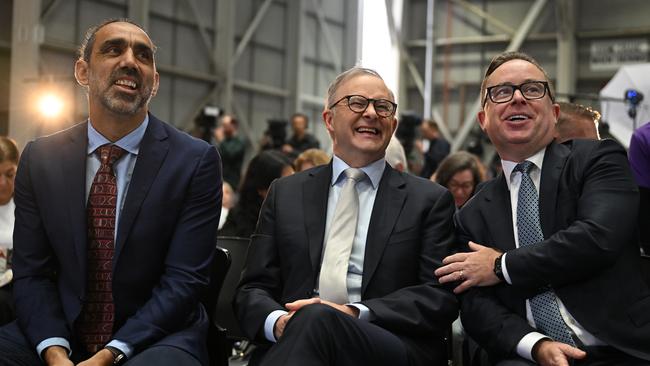Share buybacks: How the Qantas story puts them on trial
Lauded as a boon to earnings per share, there is now considerable scepticism about share buybacks – the ageing fleet at Qantas demonstrates the problem.
On November 8, 2024, a Qantas Boeing 737 suffered an engine failure during takeoff at Sydney Airport. Disaster was narrowly averted, thanks to the exceptional skill of the pilot and crew. This incident, however, sparked a storm of criticism around Qantas’s reluctance to renew its ageing fleet.
The aircraft was 19 years old, nearing its operational “life limit”. This revelation paints a stark picture of a national carrier that may have neglected safety in favour of short-term shareholder returns.
This critique is not new, but the engine failure incident has thrust it into the national consciousness, reigniting debates around the practice of share buybacks commonly used by Qantas and the wider corporate world.

When individuals accept a position as directors, they pledge to act in the company’s best interests. This is a cornerstone of corporate law worldwide. However, this duty is frequently misinterpreted and often conflated with acting in the best interests of shareholders. Shareholders are not the company, and they do not share the same interests. This confusion is not trivial – it has profound implications, particularly when a board authorises share buybacks that prioritise immediate shareholder returns at the expense of the company’s long-term viability.
Share buybacks provide a vivid illustration of this misalignment. When a board chooses to repurchase shares, it boosts metrics such as earnings per share and stock price. This may satisfy investors and inflate executive bonuses, but it comes at a cost: less capital is available for investment in critical infrastructure, research and development and safety.
A share buyback reduces the number of outstanding shares on the market. This drives up EPS – a key metric tied to executive compensation – and puts cash directly into the hands of shareholders.
While buybacks can be a legitimate way to return surplus capital to investors, the practice was viewed as market manipulation for much of the 20th century. It was effectively banned in the US until 1982.
The shift came during the Reagan era, under the belief that economic benefits would “trickle down” from shareholders to the broader economy. The introduction of SEC Rule 10b-18 gave companies a “safe harbour” for conducting buybacks, and they were adopted throughout the corporate world, with Australia following suit in 1995. Today, buybacks are a common practice, but they remain controversial, particularly when executed at the expense of strategic investments.
Qantas: a case study
Under former chief executive Alan Joyce, Qantas embarked on an aggressive program of share buybacks. Between 2015 and 2019, the airline spent nearly $2bn repurchasing its own shares. While this buoyed the share price and enriched shareholders, it coincided with a stark increase in the average age of its fleet, from under eight years in 2015 to nearly 15 years by 2022.
Compared to competitors such as Singapore Airlines (average fleet age of 6.9 years) and Emirates (8.9 years), Qantas’s fleet is significantly older, which translates to higher maintenance costs, lower fuel efficiency and diminished customer satisfaction.
Critics argue that Qantas’s capital allocation decisions reflected a preference for financial engineering over operational excellence during this period.
The alignment between CEO payments and share buybacks is critical to understanding the issue. Executive compensation often hinges on financial metrics such as EPS and share price, which are directly influenced by buybacks. For a CEO, authorising buybacks can lead to an immediate executive bonus, even if the company’s long-term interests are compromised.
In the case of Qantas, Joyce’s remuneration package heavily emphasised financial performance. Each buyback not only enriched shareholders but also bolstered Joyce’s personal compensation. This alignment of incentives underscores how buybacks can create conflicts of interest for corporate leaders, prioritising short-term gains over strategic imperatives such as fleet renewal and workforce investment.

The Qantas example is far from isolated. Across industries, companies have used buybacks to bolster financial metrics, often at the expense of long-term sustainability. Boeing’s pre-pandemic focus on buybacks, which contributed to underinvestment in safety and quality, is another high-profile case. Similarly, General Electric’s aggressive buybacks in the 2000s left the company over-leveraged and vulnerable to market shifts.
When companies divert cash reserves or take on debt to fund buybacks, they often forgo critical investments in innovation, infrastructure or employee development. This trade-off can erode a company’s competitive position and leave it ill-prepared for economic downturns or industry disruptions.
The hard questions
The Qantas engine failure raises urgent questions about corporate governance and fiduciary responsibility:
• Did the board discharge its fiduciary duty by prioritising shareholder interests over the long-term viability of Qantas?
• Did the board put monetary returns for shareholders ahead of safety and even threaten the lives of its customers and staff?
• Does the board that approved Qantas’s buybacks bear legal responsibility for passenger and staff safety henceforth?
• Should the Australian government recognise the inherent conflict of interest in share buybacks and ban them?
As the dust settles on the Qantas engine failure incident, these questions demand answers – not just from the airline but from policymakers, regulators and corporate Australia as a whole.
Graham Kenny is the managing director of Strategic Factors and a regular contributor to the Harvard Business Review





To join the conversation, please log in. Don't have an account? Register
Join the conversation, you are commenting as Logout